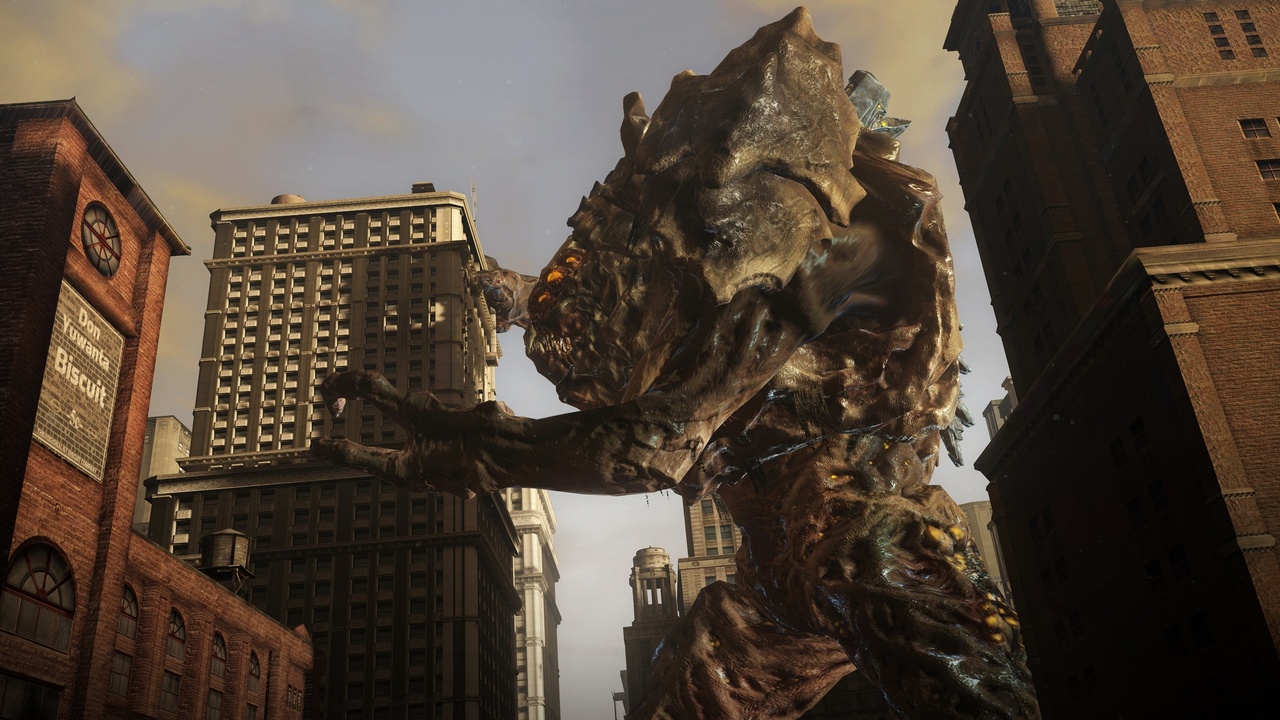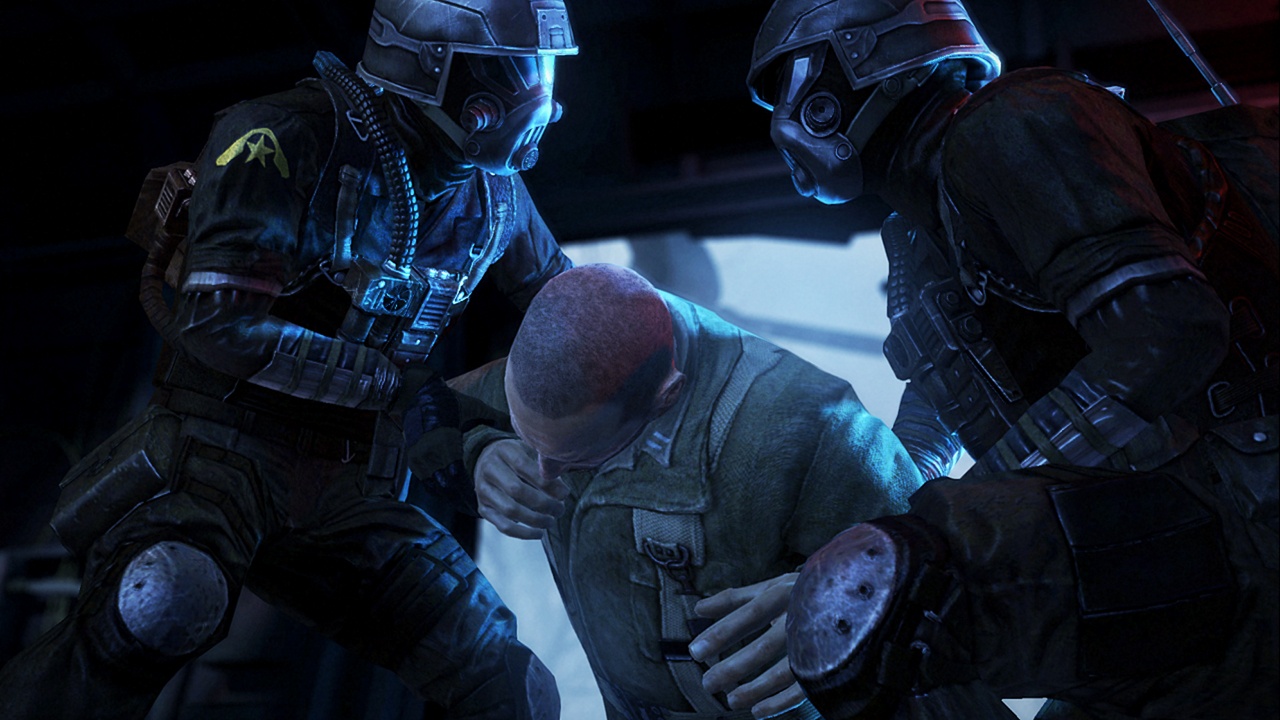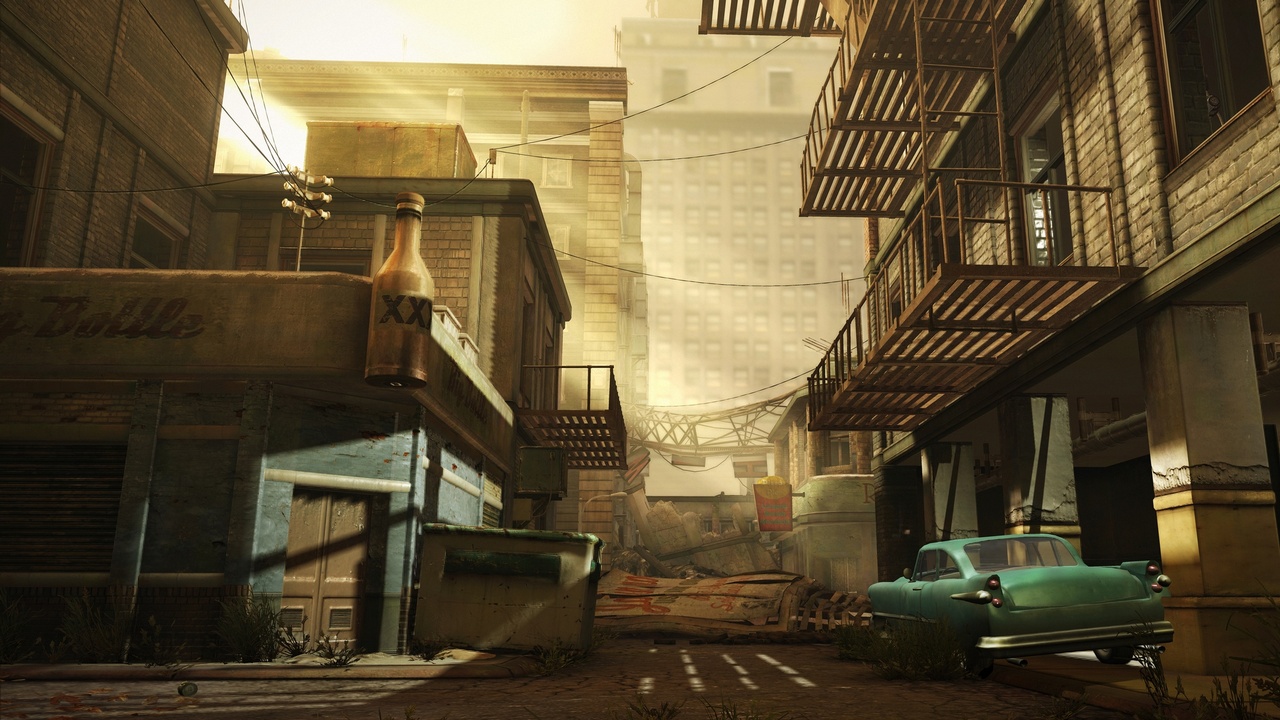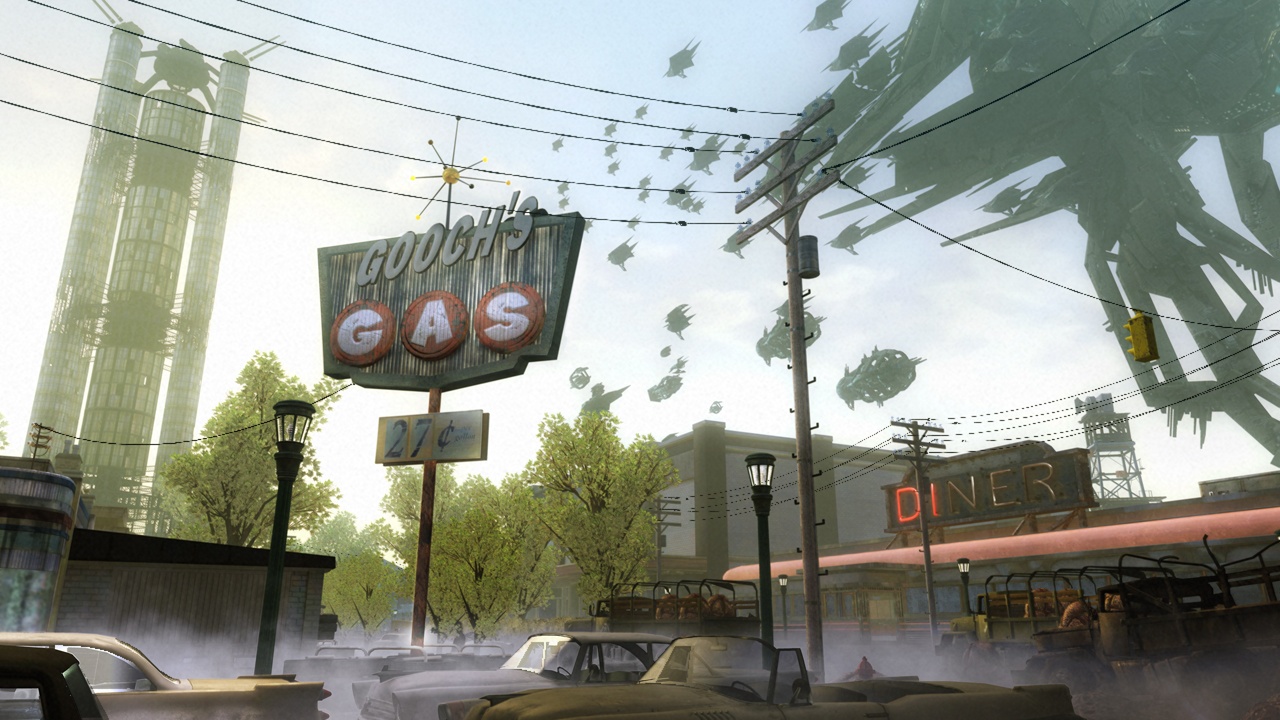Resistance 2 Q&A
We talk to Insomniac Games president and CEO Ted Price.
GameSpot: Where are you currently in development? What's done? What's left?
Ted Price: The game is just about finished as I write this. Yet the three to four weeks before we deliver a final disc to the factory are always the most difficult. This is when we're fixing bugs, adding tons of polish, making tuning tweaks, and trying to keep our builds stable for the testing team. What's great is that all of our features are in, and the game is looking, sounding, and playing fantastic. Resistance 2 has become everything we hoped it would be.
GS: Tell us a little bit about the splicer, which was revealed at Leipzig? When would players possibly want to use it?
TP: The splicer is an SPRA (Special Projects Research Administration) weapon. Like many of the SRPA weapons in the game, it was created using repurposed tech.
For the splicer specifically, SPRA began experimenting with the portable saws used in conversion camp rescue ops. The splicer uses electromagnets to accelerate the blades and then releases them with devastating consequences. When one of these blades hits an enemy, it will hit, bounce off, and return to the enemy, doing even more damage. Sometimes, particularly when used against "grims," the blades will remove heads and limbs.
Like all weapons in Resistance 2, the splicer has a couple of very different applications. While the primary fire is great for dealing with hordes, the secondary fire charges up a blade until it glows red-hot and then launches it. When it strikes an enemy, the blade lodges in the enemy's hide and continues to spin--spewing out pieces of flesh. This secondary ability is great for use against larger enemies. For example, taking down a titan is far easier when you can have several saw blades stuck into his body, churning away and doing damage over time.

GS: What have been the biggest challenges in developing this game? In addition to the MP and the SP campaigns, what were some of the challenges in developing a separate co-op campaign with a parallel storyline to the single-player campaign?
TP: Because Resistance 2 is really three games in one (single-player campaign, co-op campaign, and multiplayer competitive modes), the biggest challenge has been simply getting the game done. We take a lot of pride in our finished products, so we've been loath to cut any corners during development. Another way of putting this is that we value our fans' satisfaction above everything else, so we've killed ourselves to deliver a huge game where every component is super high quality.
Creating an online co-op mode that features eights players, multiple character classes with progression, and a separate story, in addition to what we had already planned for single-player and multiplayer competitive, was a challenge in many ways. First, we had to make sure that all three production teams were constantly communicating. There is a lot of crossover between all three modes since they share weapon behavior, camera/movement code, UI code, and much more. For example, if the single-player team changed the functionality for our HE 44 Magnum, it would immediately affect both the co-op and competitive teams.
Another challenge we faced was in creating co-op levels that could support extremely large numbers of characters. For a first-person shooter to be fun with eight players, you need a lot of stuff to shoot. As a result, we've got hordes of enemies to face down during co-op. But this means that our spaces are laid out very differently than in the single-player game. Not only do the enemies have to maneuver easily, we have to prevent players from getting too bunched up in any area, and this requires a different design approach.
We also had to develop much faster AI and navigation routines to support lots and lots of enemies in complex environments. And these had to be enemies who weren't just standing there and firing. The enemies communicate with each other, they react to the players' actions, and they can handle making their way through often cluttered environments without getting stuck. As a result, the routines they use are sophisticated but expensive in terms of processor time. These routines have to be heavily optimized and rewritten to run on the PlayStation 3's SPUs. This optimization opens up many, many options for us in terms of designing very big and dynamic battles.
And, of course, creating a story that supports a co-op game that isn't necessarily linear was a big challenge. Co-op has a branching structure where players can choose to move through the game in different ways. This ensures that there is tremendous replay value for the co-op mode. Yet, it made creating the story a nightmare. Fortunately, thanks to a lot of teamwork between our co-op designers and our writing crew, we were able to craft a story that works for a nonlinear game and one that complements the single-player story. The story isn't told with cinematics (like our single-player campaign), but there's still a ton of content that provides context for your co-op missions. And if you're interested in Resistance lore, you should definitely play through co-op--there's a lot in the story that helps flesh out the Resistance world even further.
GS: More playable coming soon? Any hints on additional US locales we may see the Chimera invading?
TP: We'll be showing new levels in the very near future for the campaign, cooperative, and competitive modes. We've already revealed San Francisco, CA; Orick, CA; Twin Falls, ID; Chicago, IL; and Iceland.
GS: How is the multiplayer beta going? What can we expect from the upcoming public one?
TP: The private beta has been a great success for us. We invited a very small group of community members from myresistance.net, as well as a few European players. The feedback has been incredibly constructive, and we've addressed many of the issues players had. Despite the fact that we're using very early and relatively unpolished code, we've been extremely happy with the response.
GS: Co-op will be in the public beta, correct? What have you guys done with the co-op that's different? Can you tell us a little bit about different classes/gameplay styles people will play as?
TP: Yes, online co-op will be a big part of the public beta. And, we firmly believe we're breaking entirely new ground with Resistance 2's online co-op. What's different? First, we offer eight-player online co-op. Second, you can choose to play three different character classes, all of which can be leveled up to unlock unique weapons, armor, and abilities. Third, the co-op campaign has its own story--you aren't playing through the single-player story (which is pretty standard in most games.) Fourth, as I mentioned earlier, we have a branching level structure so that each play-through can be different.
During the public beta, players will get to check out the three different classes and level them up to a limited extent--unlocking some of the cool persistent rewards we offer.
So what are the classes? You can play as a medic, a spec ops, or a soldier. Each class is designed to support the other two classes. Here's how:
The soldier is the damage sponge of the group. His primary weapon is the HVAP wraith minigun. The wraith can deploy a moveable shield, which protects both the soldier [and] the teammates who follow him.
The medic is the only class that can heal the team. But to gain healing power, medics must use a special weapon, the medicator, to siphon energy from enemies.
The spec ops is the main damage dealer in the team and has the scoped marksman--allowing this class to stay back and work from a distance. However, the spec ops is responsible for dropping ammo packs and thus, must venture into the line of fire as well.
It's a lot of fun to try out different class mixes with your friends. Playing with eight medics is a challenge, but we're sure it's one some of the more masochistic players will want to try.
Finally, as I mentioned above, all of these character classes have plenty of cool unlockables they'll earn as they level up. These unlockables affect gameplay and ensure that the game stays fresh.

GS: How are you looking to get anything in particular out of the public beta outside of network testing?
TP: Our goals are a) to see how our fans react to the game and to get their final feedback b) to enlist their help in finding the last few bugs and balance issues c) test the servers with much higher player counts and d) generate lots of excitement for the November 4 release date.
GS: How much will the information you get out of the beta affect the game (that is, weapon balancing, structure, and so on)?
TP: Being able to see large groups of players in the game and analyzing the resulting stats will help tremendously as we move toward launch. Private beta participants have already provided a wealth of data, which we've used to balance all sorts of things in the game: weapons, enemy damages/HP, checkpoint placement in co-op, etc.
GS: Have you been taking any feedback on the community features you've announced for R2 so far? Are the features being influenced at all by them?
TP: Sure. We're always looking for and collecting feedback from the community. Since we launched myresistance.net with Resistance: Fall of Man, we've been particularly interested in players' opinions of the site. We've used many of their comments in our redesign of myresistance.net.
I think our community is going to be blown away by how many cool new features we have in the revamped site.
GS: Can we expect more information on the game's story soon? Do the Project Abraham and AFAO sites fit into the game's story?
TP: We're being careful to avoid revealing too much more of the story. We want players to enjoy the ride while they're playing the game. So, I'm sorry--no spoilers.
But yes, Project Abraham and the America First America Only site are important parts of the Resistance lore. Both help to explain what's happening in Resistance 2 and what happened in Resistance: Fall of Man.
Plus we've announced several other new parts of the Resistance universe, including Resistance: The Gathering Storm, a novel by acclaimed science-fiction William C. Dietz, as well as a comic book series from Wildstorm (of which a digital copy of issue zero can be found in our Collector's Edition).
Finally, hopefully you've heard about Resistance: Retribution, the PSP game being developed by Sony's Bend Studio. The game is looking awesome. We've also been working with the talented folks there to ensure that the stories in both games support each other. When Retribution is released next year, it will flesh out the Resistance mythos even further.
GS: You guys are a third-generation PS3 developer--how has that experience benefited you with R2?
TP: At this point, we feel very comfortable with the PS3, especially since Resistance 2 is our fourth PS3 title. One benefit of developing for a sole platform is that we've been singularly focused on pushing the PS3 harder and harder. And as a result, each game we release shows significant improvements over its predecessors.
During the last three or four years, we've been continuously improving our engine, our in-game systems, and our tools. The returns we've seen from these efforts include many behind-the-scenes improvements that enable us to support a better game experience. For example our "hidden" tech improvements result in more enemies running better AI routines, larger and more detailed environments, seamless loading between levels, more believable atmospheric effects--the list goes on and on.
And, then, there are the really cool tech improvements that everyone should notice right away. Two of my favorites are a) the vastly improved shaders on both characters and environment objects and b) our revamped lighting system, which uses a combination of dynamic and baked lighting to create more vibrant environments. As a result, the game looks very different from Resistance: Fall of Man.
But one improvement I think everyone will notice is our new water. It's refractive, reflective, and can be tuned to create anything from muddy swamp water to a crystal clear Caribbean shoreline. It's fully interactive--meaning characters create very believable ripples and waves as they move around in it.
One of my favorite moments in the game takes place in a flooded area of Twin Falls, Idaho, where around 20 submerged leapers rush the player. All of the leapers are creating ripples, which interact with each other, something that's incredibly hard to program, especially if you want the game to run fast. It's also easy to get distracted by how cool the water looks while you're getting chewed up by the leapers.
We're extremely happy with where R2 is overall. That said, we're confident we'll continue to wring even more out of the PS3 over the next few years.
Got a news tip or want to contact us directly? Email news@gamespot.com


Join the conversation